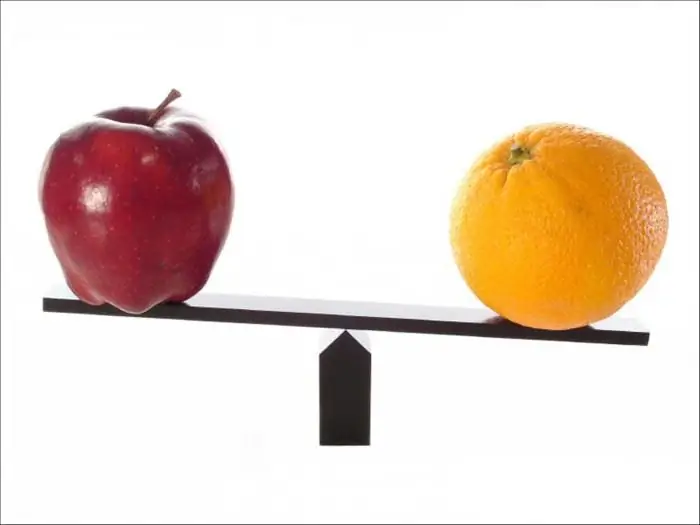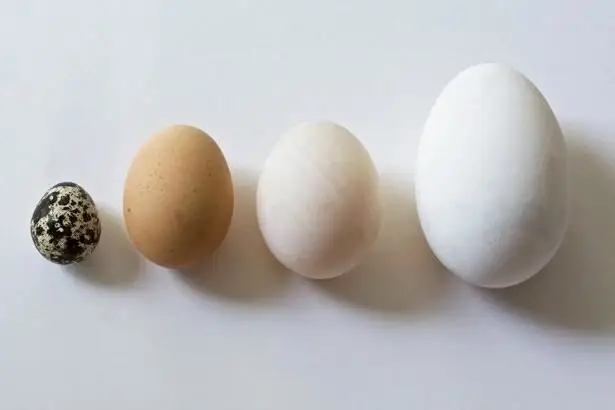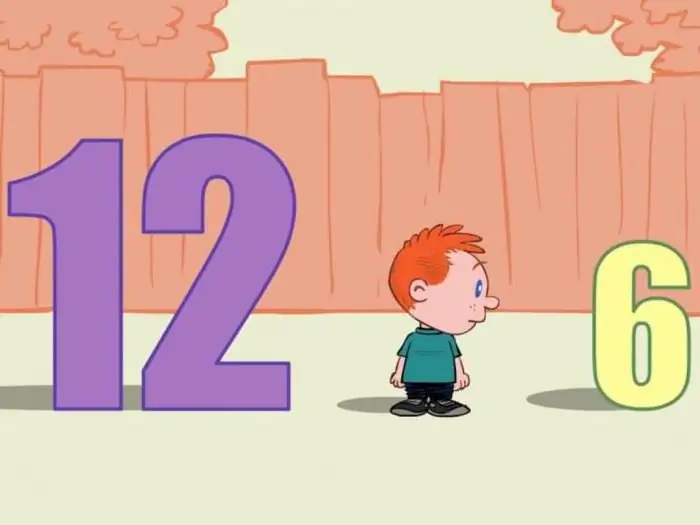From the earliest times, people have been seriously interested in the question of how it is most convenient to compare quantities expressed in different values. And it's not just natural curiosity. The man of the most ancient terrestrial civilizations attached purely applied significance to this rather difficult matter. Correctly measuring the land, determining the weight of the product on the market, calculating the required ratio of goods in barter, determining the correct rate of grapes when harvesting wine - these are just a few of the tasks that often surfaced in the already difficult life of our ancestors. Therefore, poorly educated and illiterate people, if necessary, to compare values, went for advice to their more experienced comrades, and they often took an appropriate bribe for such a service, and quite a good one, by the way.

Comparable
In our time, this lesson also plays a significant role in the process of studying the exact sciences. Everyone, of course, knows that it is necessary to compare homogeneous values, that is, apples - with apples, and beets - withbeets. It would never occur to anyone to try to express degrees Celsius in kilometers or kilograms in decibels, but we have known the length of the boa constrictor in parrots since childhood (for those who do not remember: there are 38 parrots in one boa constrictor). Although parrots are also different, and in fact the length of the boa constrictor will vary depending on the subspecies of the parrot, but these are the details that we will try to figure out.

Dimensions
When the task says: "Compare the values of quantities", it is necessary to bring these same quantities to the same denominator, that is, to express them in the same values for ease of comparison. It is clear that it will not be difficult for many of us to compare the value expressed in kilograms with the value expressed in centners or in tons. However, there are homogeneous quantities that can be expressed in different dimensions and, moreover, in different measurement systems. Try, for example, comparing kinematic viscosities and determining which fluid is more viscous in centistokes and square meters per second. Does not work? And it won't work. To do this, you need to reflect both values in the same values, and already by the numerical value to determine which of them is superior to the opponent.
Measuring system
In order to understand what quantities can be compared, let's try to remember the existing measurement systems. To optimize and speed up settlement processes in 1875, seventeen countries (including Russia, the USA, Germany, etc.) signed a metricconvention and the metric system of measures is defined. To develop and consolidate the standards of the meter and kilogram, the International Committee for Weights and Measures was founded, and the International Bureau of Weights and Measures was set up in Paris. This system eventually evolved into the International System of Units, SI. Currently, this system is adopted by most countries in the field of technical calculations, including those countries where national physical quantities are traditionally used in everyday life (for example, the USA and England).

GHS
However, in parallel with the generally accepted standard of standards, another, less convenient CGS system (centimeter-gram-second) developed. It was proposed in 1832 by the German physicist Gauss, and in 1874 modernized by Maxwell and Thompson, mainly in the field of electrodynamics. In 1889, a more convenient ISS (meter-kilogram-second) system was proposed. Comparing objects by the size of the reference values of the meter and kilogram is much more convenient for engineers than using their derivatives (centi-, milli-, deci-, etc.). However, this concept also did not find a mass response in the hearts of those for whom it was intended. The metric system of measures was actively developed and used all over the world, therefore, calculations in the CGS were carried out less and less, and after 1960, with the introduction of the SI system, the CGS practically fell into disuse. At present, the CGS is actually used in practice only in calculations in theoretical mechanics and astrophysics, and then because of the simpler form of writing the lawselectromagnetism.

Step by step instructions
Let's analyze the example in detail. Suppose the problem is: "Compare the values of 25 tons and 19570 kg. Which of the values is greater?" The first thing to do is to determine in what quantities we have given values. So, the first value is given in tons, and the second - in kilograms. At the second step, we check whether the compilers of the problem are trying to mislead us by trying to force us to compare heterogeneous quantities. There are also such trap tasks, especially in quick tests, where 20-30 seconds are given to answer each question. As we can see, the values are homogeneous: both in kilograms and in tons, we measure the mass and weight of the body, so the second test was passed with a positive result. The third step is to convert kilograms to tons or, conversely, tons to kilograms for ease of comparison. In the first version, 25 and 19.57 tons are obtained, and in the second: 25,000 and 19,570 kilograms. And now you can compare the magnitudes of these values with peace of mind. As you can clearly see, the first value (25 tons) in both cases is greater than the second (19,570 kg).

Traps
As mentioned above, modern tests contain a lot of fake tasks. These are not necessarily tasks that we have analyzed, a rather harmless-looking question can turn out to be a trap, especially one where a completely logical answer suggests itself. However, the deceit, as a rule, lies in the details or in a small nuance that the compilersjobs are trying in every possible way to disguise. For example, instead of the question already familiar to you from the analyzed problems with the formulation of the question: "Compare the values where possible" - the compilers of the test can simply ask you to compare the indicated values, and choose the values themselves strikingly similar to each other. For example, kgm/s2 and m/s2. In the first case, this is the force acting on the object (newtons), and in the second - the acceleration of the body, or m/s2 and m/s, where you are asked to compare the acceleration with the speed of the body, then there are absolutely heterogeneous quantities.

Complex comparisons
However, very often two values are given in assignments, expressed not only in different units of measurement and in different systems of calculation, but also different from each other in the specifics of the physical meaning. For example, the statement of the problem says: "Compare the values of the dynamic and kinematic viscosities and determine which liquid is more viscous." At the same time, the values of kinematic viscosity are indicated in SI units, that is, in m2/s, and dynamic viscosity - in CGS, that is, in poise. What to do in this case?
To solve such problems, you can use the above instructions with a little addition. We decide in which of the systems we will work: let it be the SI system, generally accepted among engineers. In the second step, we also check if this is a trap? But in this example, too, everything is clean. We compare two fluids in terms of internal friction (viscosity), so both values are homogeneous. third stepwe translate the dynamic viscosity from poise to pascal-second, that is, into the generally accepted SI units. Next, we translate the kinematic viscosity into dynamic, multiplying it by the corresponding value of the density of the liquid (table value), and compare the results obtained.
Out of system
There are also non-systemic units of measurement, that is, units that are not included in the SI, but according to the results of the decisions of the General Conference on Weights and Measures (GCWM), acceptable for sharing with the SI. It is possible to compare such quantities with each other only when they are reduced to a general form in the SI standard. Non-systemic units include such units as minute, hour, day, liter, electron volt, knot, hectare, bar, angstrom and many others.






